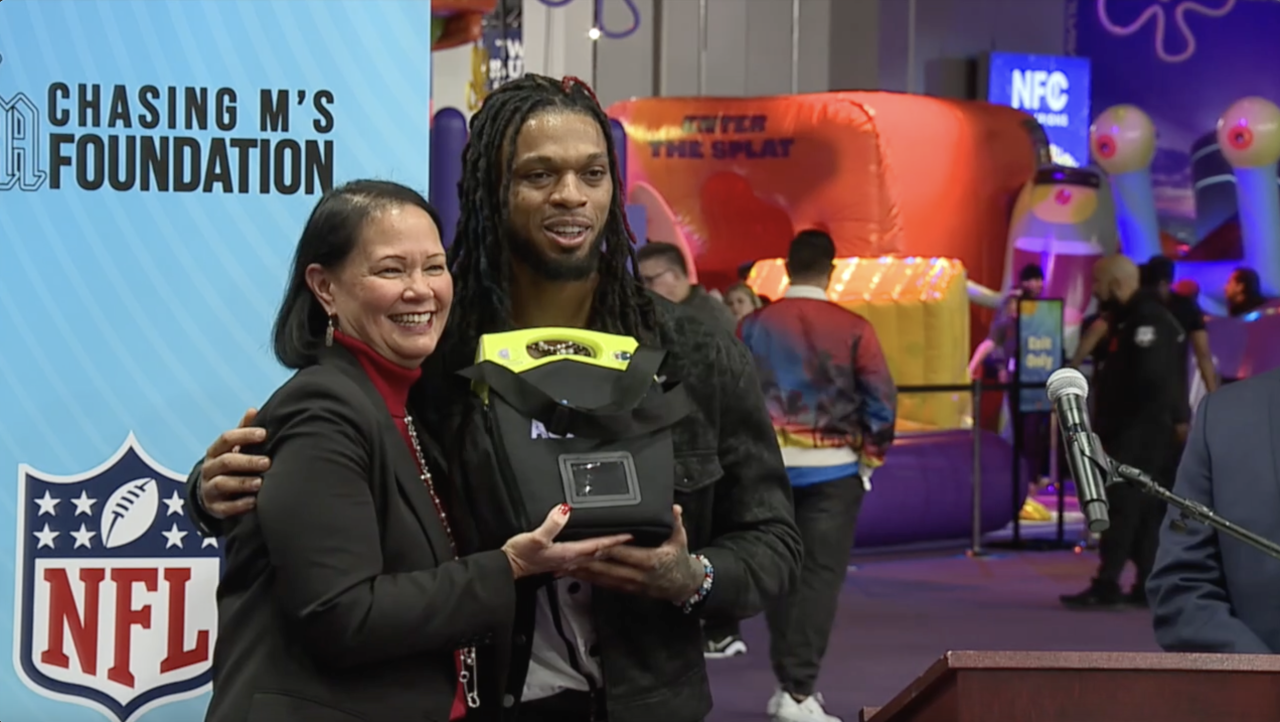LAS VEGAS (KTNV) — It's been just over a year since Buffalo Bills player Damar Hamlin collapsed on the field during Monday Night Football.
The scary moment happened after he tackled Cincinnati Bengals wide receiver Tee Higgins and then collapsed on the ground. Hamlin went into cardiac arrest and medical personnel ran onto the field and immediately began CPR and used an AED to get his heart started again.
He has since recovered and credits medical personnel on the sidelines for saving his life.
Hamlin was diagnosed with Commotio cordis, which basically means it's rare type of cardiac arrest that happened immediately after taking a blow to the chest.
Hamlin has since recovered from the incident and is using his platform to raise awareness about how important it is to know CPR and how to use an AED.

On Friday, Hamlin announced that his foundation, the Chasing M's Foundation, is teaming up with the NFL, American Heart Association, Nevada Department of Education, and the Nevada Interscholastic Activities Association to donate $100,000 worth of AEDs to each Title I high school with an athletic program in Nevada. That's 47 total schools.
"We love to learn from the good situations instead of the bad ones. My situation could have went 1,000 other ways and everyone was still feeling that urgency they felt that first night, the first month, and the two months after it happened," Hamlin said. "We have to feel that urgency that we felt in the beginning, when my situation first happened. That's what we're doing here. We're keeping that same enthusiasm and we're keeping that effort going."
"On behalf of the NAIA, I want to express my sincere appreciation and gratitude for Damar and his Chasing M's foundation," Clark County School District assistant superintendent Kevin McPartlin said to media. "These AEDs will ensure that all high school athletes and communities have access to this life-saving equipment."
According to a press release, the state of Nevada is currently missing two of the three best-practice, evidence-based policies the coalition is advocating for across all 50 states.
- Emergency Action Plans for each high school athletic venue that are widely distributed, posted, rehearsed, and updated annually
- Clearly marked AEDs at each athletic venue or within one to three minutes of each venue where high school practices and competitions are held
According to McPartlin, Nevada coaches receive CPR and AED education but there's still work to do.
"The NIAA is working on guidance to ensure that each athletic venue has an AED and emergency action plan in place. Later this year, we will formally adopt these policies and then work with our state lawmakers to codify and further strengthen them in law when the legislature convenes in 2025," McPartlin said.

Hamlin said his community want to find ways to show support him after his heart incident and he thinks this is the perfect way to give back.
"As a kid, growing up, I never once thought twice about where an AED was while I was in school or while I was playing. I was just being a kid. Kids should be able to be kids but situations happen. Accidents happen and kids need to be able to play safe," Hamlin said. "To be able to directly be on that side of making an impact and making sure those kids can play safe, that warms my heart and that's my real purpose in this world."
You can learn more about the NFL's Smart Heart program here and you can learn how to perform CPR here.





